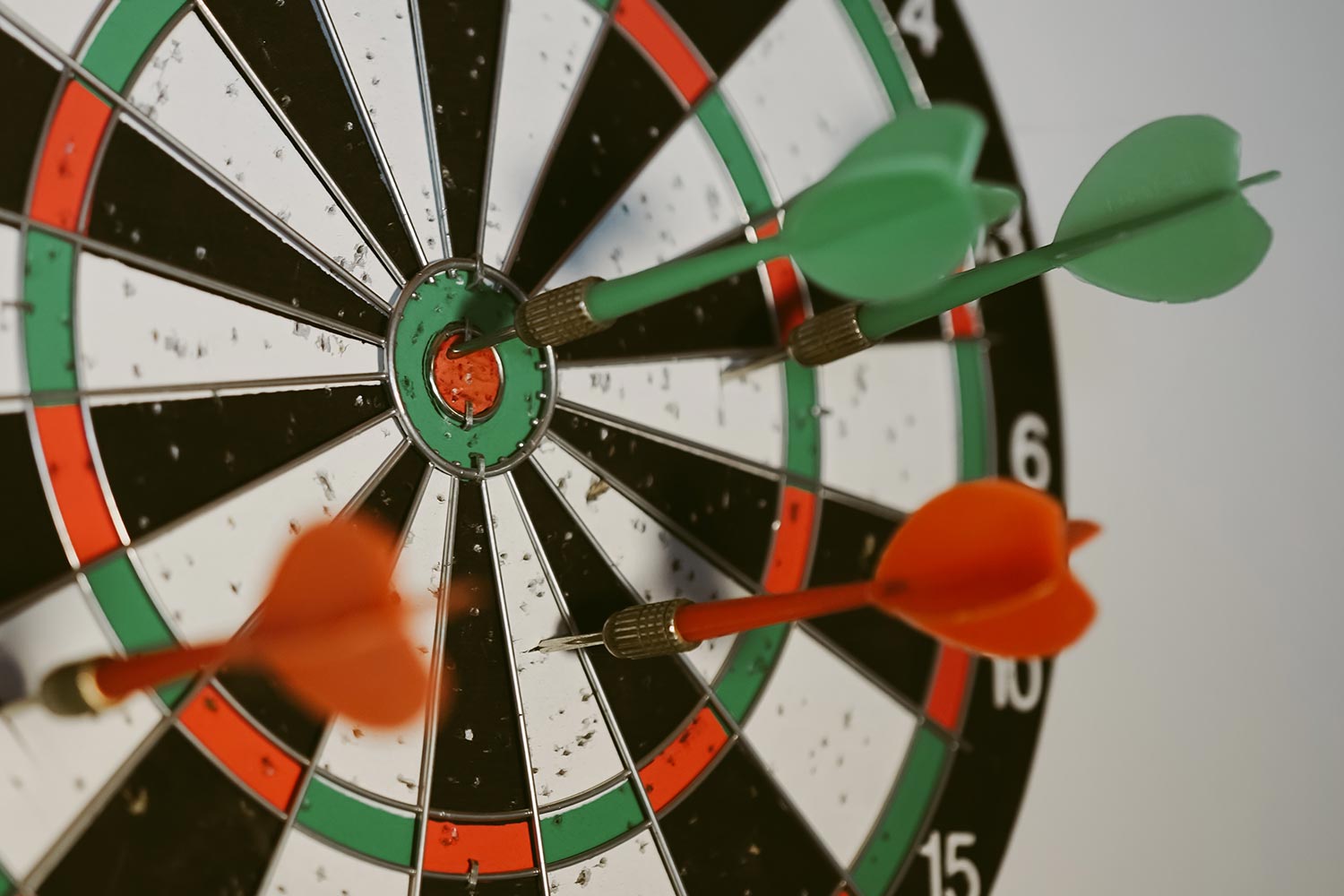To Solve the Problem, Focus on the Desired Outcome: A Formula for Nonprofits
Solving challenges is ultimately about creating the outcomes we want. By asking goal-oriented questions, you’ll come up with better outcomes.

Asking goal-oriented questions can better help your nonprofit reach the desired outcome.
The gala attendance for your nonprofit is down, year over year. So, you ask, How can we fix our gala attendance?
Naturally, this leads to ideas to make the gala snazzier. However, that doesn’t actually solve the shrinking attendance problem.
Instead, ask yourself this: What was the goal of the gala? Was it fundraising, awareness, movement building? What if you had multiple goals? By asking goal-oriented questions, you will come up with better ways to achieve the desired outcome.
How This Approach Works
First, let’s acknowledge most of us are really good at seeing the problem. However, most of us aren’t very good at identifying and articulating what we truly want. Let’s call what we truly want our ambition.
We’re also not fantastic at seeing our constraints. Our ability to see our constraints is constantly distorted by emotions that change our physiology, as well as issues that divert our attention and intentions.
Solving challenges is ultimately about creating the outcomes we want. To create the outcomes we want (to achieve our ambitions), we need to do the following:
- Know what we want
- Grasp the reality surrounding our challenge
So, to get better at solving challenges, we need to get better at identifying our ambitions and seeing our constraints. Each time we sense a challenge or a problem, we should not skip the step of identifying both our ambition and constraint to ensure we fulfill our ambitions.
The magic happens when you marry the ambition and the constraint together in your design statement.
Here is the model: How can we accomplish x(ambition) despite y(constraint)?
Or, to use our earlier example: How can we fundraise despite declined attendance at the gala? You see, that’s a much different question than How can we fix our gala attendance?
That question [How can we accomplish x(ambition) despite y(constraint)?] drives us to want to solve for the tension it creates.
Why Shouldn’t You Focus on the Problem?
Because, as Albert Einstein said, “No problem can be solved from the same level of consciousness that created it.”
Energy follows the path of least resistance, and where tension exists, that tension is going to want to release. When you focus on the problem, you amplify the problem. Your work is contained within the structure of the problem to solve it. The structure of the problem doesn’t care about your solution—it craves homeostasis. So, when you put a solution in place without changing the structure of the problem, the tension will render a situation similar to the previous one.
So, before you know it, you are trying to solve the same problem, in a different way, all over again. All you do is continually bang your head against the wall trying to solve the problem in an oscillating cycle.
You can’t solve problems this way.
You need to create a new structure by focusing on creating the outcome you want.
Solving a problem is trying to eliminate something. But creating the outcome you want is trying to bring something new into existence.
But Why Does Focusing on the Outcome Work?
There’s a psychological theory called Theory of Mind, which generally describes our way of explaining our behavior and that of others based on the two key factors (our actions and our beliefs) being connected. Theory of Mind generally states that an individual will act on their beliefs to obtain their desires. In other words, we will take action to get what we want, but how we go about getting it is determined by our beliefs about the situation.
By taking time to identify the ambition and the constraint—How can we accomplish x(ambition) despite y(constraint)?—we address those beliefs head-on and create a new tension that drives us to want to solve for the challenge.
According to the Diffusion of Innovations theory by Everett Rogers, if you look at the innovation adoption lifecycle, only 2.5% of the population are innovators. That’s because the easiest thing to do is avoid tension, but when your belief and your desire (constraints and ambitions) are related, tension is difficult to avoid.
The Fastest Way to Start
You might only have your ambition to start, and that’s okay.
The fastest way to start is with a design question that begins, “How can we accomplish x…?”
You can add your constraint to your design statement as you learn more insights about your project. From there, you can reframe using different perspectives, lenses, and experiments.
Be sure not to lessen your ambition to meet your constraint. When you do, you weaken the tension and the desire to solve the challenge. Set high ambitions for your team. It will help them solve the challenge!
Now that you know this, go win the day!
In case you missed it…
About the Author
Jack Elkins is the founder of Sidekick Innovation, a professional development and innovation project firm. Before starting his own company, he was the Director of Innovation for the NBA’s Orlando Magic basketball team where he built the NBA’s first innovation lab. He helps leaders and teams master the most effective ways to innovate and transform into creative collaborators, so they can navigate and conquer their business challenges—together. You can see more at SidekickInnovation.com. Jack lives in Central Florida with his wife and two sons.
Articles on Blue Avocado do not provide legal representation or legal advice and should not be used as a substitute for advice or legal counsel. Blue Avocado provides space for the nonprofit sector to express new ideas. Views represented in Blue Avocado do not necessarily express the opinion of the publication or its publisher.











